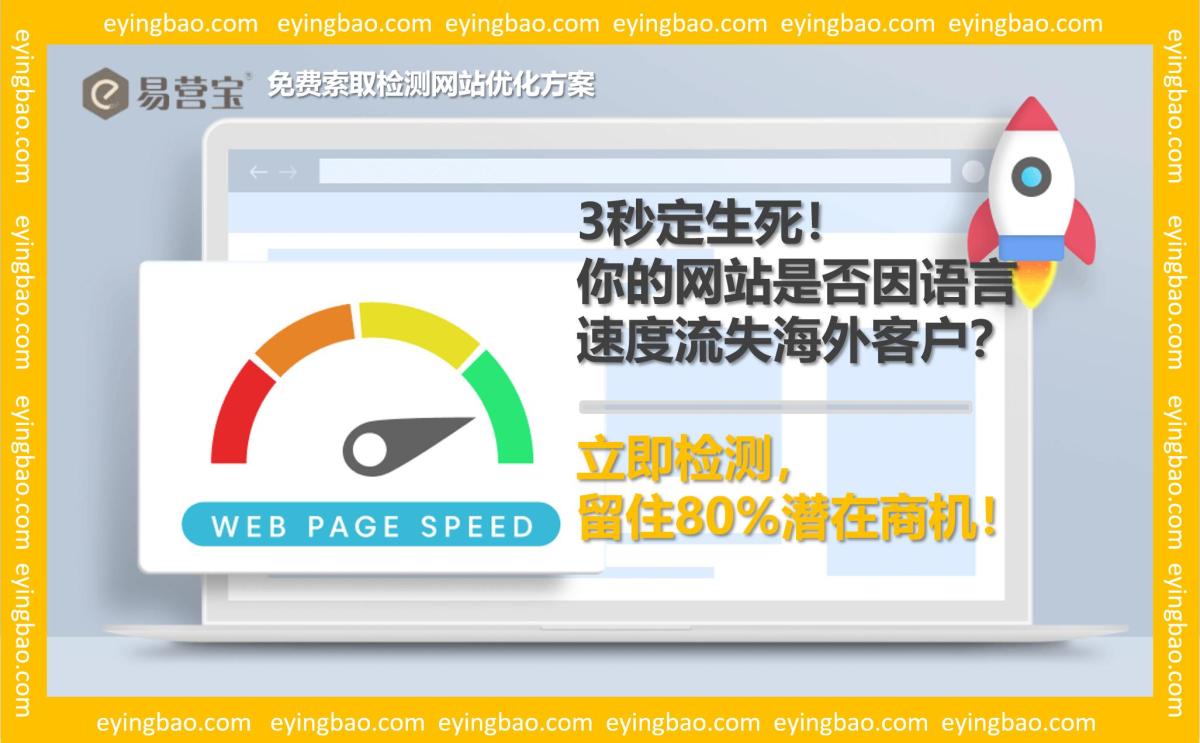EasyProfit Cloud Intelligent Website Marketing System Platform!
- 3 Core Google Ads Optimization Techniques Your Consultant Won't Tell You2025-09-18View Details
- Why do 90% of foreign trade standalone site ad campaigns fail?2025-09-18View Details
- Guangzhou Enterprises Must-Read: How to Break Through Growth Bottlenecks in Foreign Trade with Independent Website Development?2025-09-18View Details
- City Partner Success Stories: Earning $100K Monthly Is No Dream!2025-09-16View Details
- How to choose the best partner for exclusive agency rights of foreign trade websites?2025-09-18View Details
- AI+SEM Intelligent Advertising Marketing System, ROI Increased by 50%!2025-09-16View Details
- City Partner Profit Secrets Revealed!2025-09-17View Details
- Zero-code project franchising - is it really right for you?2025-09-17View Details
Is your website loading slowly? Try these optimization techniques!
Website loading too slow? Try these optimization techniques!
In today's fast-paced digital era, website loading speed has become a critical factor for user experience and search engine rankings. Studies show that load times exceeding 3 seconds can lead to significant user drop-off. This article provides practical optimization techniques to improve your site's loading speed while exploring the differences between SEM and SEO and tricks for rapid website indexing.

1. Why is website loading speed so important?
Website loading speed not only affects user experience but also directly impacts search engine rankings. Google explicitly states that site speed is one of the key factors in its ranking algorithm. Moreover, slow load speeds lead to higher bounce rates, lower conversion rates, and ultimately affect business revenue.

1.1 Impact on user experience
Modern users have increasingly high expectations for website responsiveness. A survey reveals that 53% of users will abandon mobile sites taking longer than 3 seconds to load. This means even with excellent content, slow loading times will cost you potential customers.
1.2 Impact on SEO rankings
Google's algorithm updates increasingly prioritize user experience metrics, with page speed being one of the key factors. Faster loading speeds not only boost rankings but also help achieve rapid indexing and improve SERP visibility.

2. Practical techniques to improve website loading speed
The following validated methods can significantly enhance your website's loading speed:
2.1 Optimize images and multimedia content
Images are typically the largest resources on websites. These methods can drastically reduce image size:
Use appropriate formats (e.g., WebP)
Compress images without quality loss
Implement lazy loading
Specify image dimensions to avoid layout shifts
2.2 Reduce HTTP requests
Each resource (images, CSS, JavaScript files) requires separate HTTP requests. Reducing requests significantly improves loading speed:
Combine CSS and JavaScript files
Use CSS Sprites technique
Remove unnecessary plugins and scripts
2.3 Leverage browser caching
Proper cache policies allow returning users faster loading. Configure appropriate cache headers to ensure static resources are cached, reducing repeated downloads.
2.4 Use Content Delivery Network (CDN)
CDNs cache your content on globally distributed servers, enabling users to retrieve resources from the nearest node, significantly reducing latency. This is particularly important for globally accessible websites.

2.5 Optimize server response time
Server configuration directly impacts site speed. Consider these optimization measures:

Upgrade to faster hosting solutions
Enable Gzip compression
Optimize database queries
Reduce redirects
3. Differences between SEM & SEO and their synergistic effects
When discussing website optimization, understanding SEM (Search Engine Marketing) vs. SEO (Search Engine Optimization) is crucial:

3.1 SEM optimization techniques
SEM mainly refers to paid search ads, with core optimization aspects including:
Precise keyword research
High-quality ad copy
Optimized landing page experience
Reasonable bidding strategies
3.2 Methods to improve website SEO rankings
SEO is a sustainable traffic acquisition method, with core optimizations including:

High-quality content creation
Technical SEO (website speed)
Authoritative backlink building
User experience optimization
3.3 How to achieve rapid website indexing
To ensure search engines quickly discover and index your content, implement these measures:
Submit XML sitemaps
Optimize internal linking structures
Create high-quality content
Utilize social media sharing
4. Professional website speed optimization services
For enterprise-level websites, professional optimization services provide more comprehensive solutions:
Comprehensive performance audits
Customized optimization plans
Ongoing performance monitoring
Technical team support
Professional optimization services deliver significant performance improvements while freeing internal resources to focus on core business.
Website speed optimization is systematic engineering requiring technical, content, and user experience approaches. These methods can dramatically improve performance, enhance SEO results, and ultimately deliver better business outcomes. Remember, in digital experience, speed equals competitiveness.
If you have any questions aboutforeign trade website development or operations, please consultEasyOutbound technical support WeChat: Ieyingbao18661939702 - our staff will answer sincerely!

Images sourced online, contact 400-655-2477 for infringement claims
Similar Recommendations




